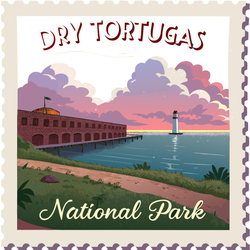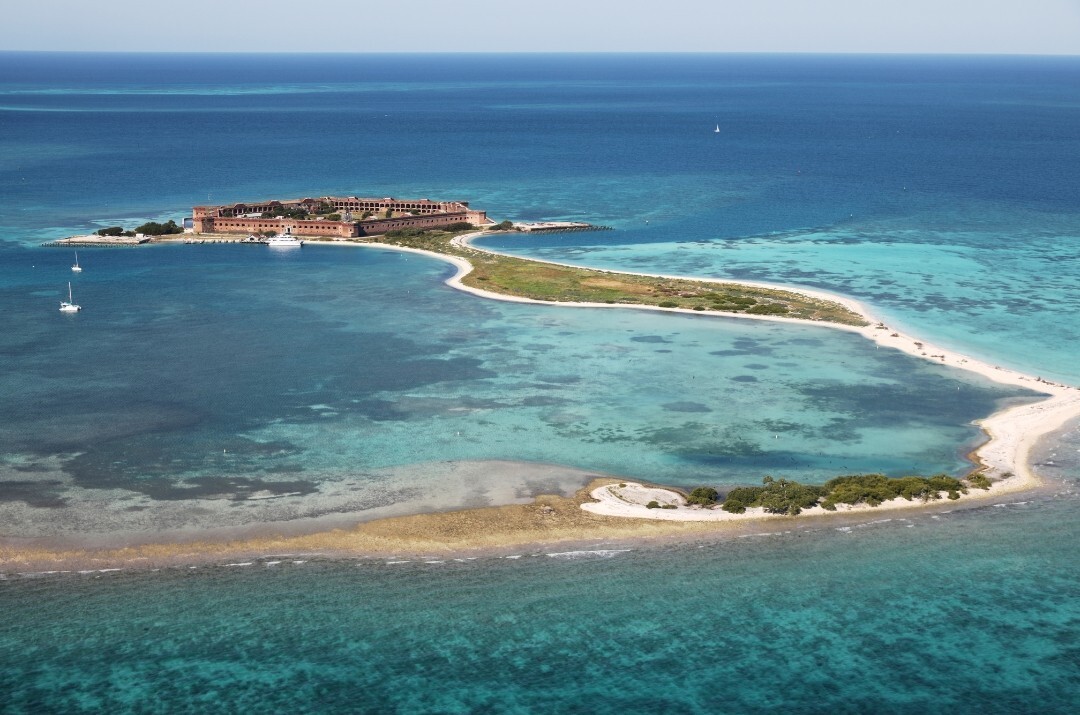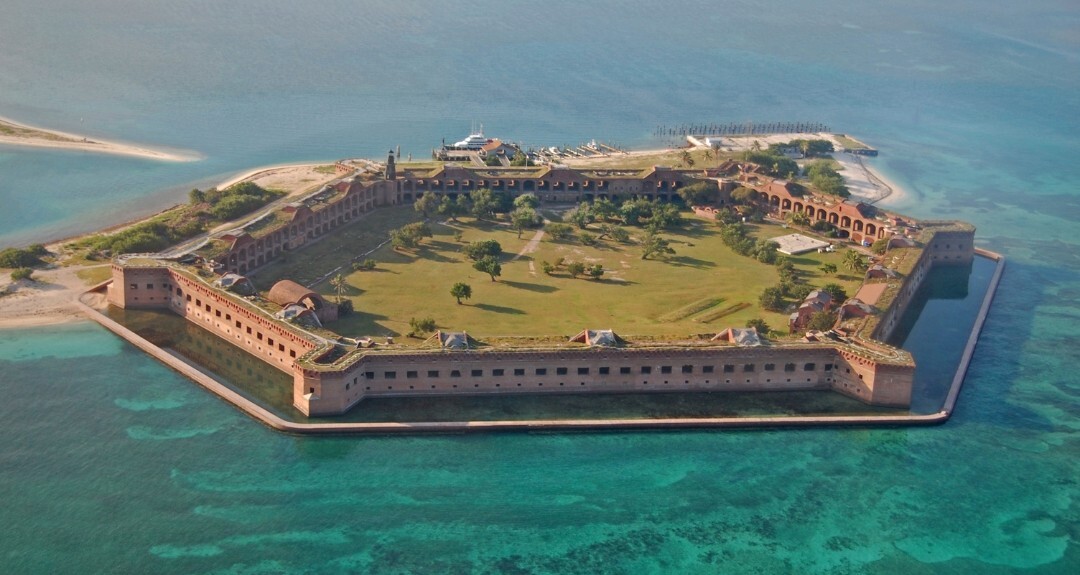Experience Dry Tortugas National Park by RV
17th Oct 2025
Stage in the Keys, Sail to a Brick Fortress
Visiting Dry Tortugas National Park in an RV is a two-part adventure: make a comfy home base in the Florida Keys, then take a ferry or seaplane 70 miles offshore to explore Fort Jefferson, coral gardens, and star-splashed skies.
Quick Overview: How Dry Tortugas Works (for RVers)
- No roads, no bridges. The park sits ~70 miles west of Key West; access is by ferry (Yankee Freedom) or seaplane; private boats welcome. Access the NPS map here.
- Camping is island-primitive on Garden Key (first-come sites; bring everything, pack out everything). NPS recommends two gallons of water per person per day; the ferry transports campers in limited numbers.
- RV reality: You’ll camp near Key West with hookups and services, then day-trip or overnight-camp on Garden Key. Ferry parking is a city garage in Key West (not RV-friendly); plan rideshare/taxi from your campground.
RV-Friendly Home Bases in the Keys (Full Hookups)
- Boyd’s Key West Campground (Stock Island) — Waterfront sites, minutes from Old Town. Full hookups; long-running favorite.
- Sugarloaf Key / Key West KOA Resort (MM 20) — Upscale RV resort with marina, pool, and on-site pub; about 30 minutes from Key West.
- Bluewater Key RV Resort — High-end, privately owned sites with tiki huts and canals; book early.
Pro tip: Leave the rig at your campground and Uber/Lyft to the ferry terminal; the recommended garage at 300 Grinnell St is ideal for cars, but Key West has no free parking and garage clearance may not suit RVs.
Getting There: Ferry vs. Seaplane
- Yankee Freedom Ferry — The official ferry from Key West; books out months in advance, only 10 campers/day, max 3 nights on the island via ferry.
- Seaplane (Key West Seaplane Adventures) — Fast, spectacular views; does not transport camping gear (day trips only) and is the only seaplane service permitted in the park.
Garden Key: Fort Jefferson, Beaches & Camping
- Fort Jefferson is one of the largest 19th-century masonry forts; Garden Key hosts the campground, visitor center, and swim beaches.
- Campground basics: First-come sites (up to 6 people/site), composting toilets (closed mid-day—use ferry restrooms then), no water, no stores, no trash service. Bring charcoal (ferry prohibits gas canisters).
- Snorkeling highlights: North/South Swim Beaches and coaling dock ruins (experienced snorkelers). Grab a simple area map before you go.
Off the Beaten Path: Lesser-Known Ideas
- Loggerhead Key day trip (private boat only): Home to an 1857 lighthouse, Carnegie’s early tropical research lab site; day-use only and a tranquil snorkel paradise. (Note: some areas like the moat wall have repair closures—check current alerts.)
- Shoreline fishing (where allowed): Excellent action, but know the closures (e.g., Bush Key, special protection zones). Florida saltwater license required.
- Stargazing & night photography: With no light pollution, a Garden Key overnight is a bucket-list Milky Way shot—pack a red headlamp and wind-worthy tent stakes.
Sample 3-Step Plan for RV Travelers
- Stage in the Keys (2–4 nights). Book Boyd’s, Sugarloaf KOA, or Bluewater Key. Settle in, prep ferry/seaplane logistics, and organize island camping bins.
- Day trip or camp on Garden Key (1–3 nights). Ferry for campers; seaplane for day-trippers. Prioritize snorkeling the coaling docks and exploring Fort Jefferson.
- Recover in the RV. Return to hookups, rinse gear, and enjoy sundowners on the Keys before rolling to your next stop.
What to Pack (Island Edition)
- Water & food: At least 2 gallons water/person/day + one extra day of supplies in case of ferry delays. Hard-sided bins keep out rats and crabs.
- Cooking supplies: Charcoal only for campground grills (no gas canisters on ferry).
- Sun & wind gear: Long-sleeve UPF, wide-brim hat, strong sand stakes, and reef-safe sunscreen.
Little-Known Facts
- Garden Key’s neighbor Bush Key often closes for nesting seabirds; check seasonal advisories. (Also note specific fishing closures.)
- Fort Jefferson dominates the island; Dry Tortugas’ waters shelter reefs, shipwrecks, and migratory birds—a magnet for snorkelers and birders alike.
Why Dry Tortugas Pairs Perfectly with RV Life
You get the best of both worlds: island adventure by day (or a minimalist overnighter), and your comfortable, well-fitted RV bed back on the mainland. Be sure to pack AB Lifestyles’ RV bedding, so you’re recharged for sunrise ferries and sunset snorkels.



